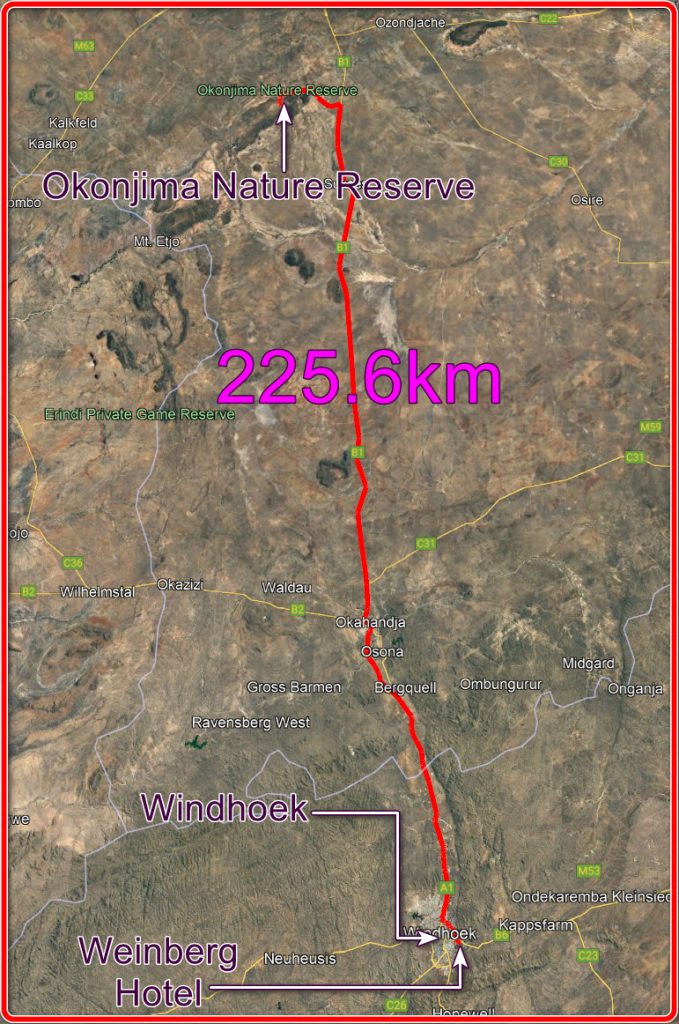
| Introduction | Windhoek | Okonjima | Okaukejo 1 | Onguma | Okaukejo 2 | Mowani |
| Swakopmund | Hoodia | Namtib | Fish River | Springbok | Babylon’s Toren | Going Home |
Wednesday 11th October
(The link above takes you to all the photos I took on the 11th October. There are a lot!)
It was a long drive to Okonjima – 225.6km – along one of Namibia’s main roads. It started in Windhoek, as the A1, a dual carriageway. Later the central reservation disappeared and it became the B1. South of Okahandja there were lots of road works as the dual carriageway was extended northward.

We noticed that there were fences all along the road. This part of Namibia is covered by huge farms most of which are white-owned. Going by the names the original owners were German.
Eventually we got to our turn off for Okonjima and drove the remaining 21km on a dirt road. We had to stop at a gate where our names were checked to confirm that we could enter Okonjima Nature Reserve. And we saw our first wild animals.

If you click on the any of the photos on these pages, you will be taken to that photo’s page on SmugMug. There you can download the picture and see where it was taken. (All the photos are geo-referenced – click on the “i”.)
All my photos taken in Namibia will be found HERE. The South African ones HERE.
Soon we arrived at the Bush Camp, served a cooling fruit juice and checked in.

We were shown to our lodge which was overlooking the wooded plains of the reserve.



That afternoon we went on a game drive with John M, one of Okonjima’s game rangers. This was a very successful drive – we saw many different animals and John knew all about them. The following photos will give you a flavour of what we saw.





Many of the leopards of Okonjma are collared making them easier to be found. This male was relatively easy to spot; the female was deep in the bush and John had to make a new path to get our truck nearby – see the photos further down this page










She had her latest kill nearby, high in a tree. It was an antelope of some sort. the day after we saw her another group saw her and her cub.

Thursday 12th October
We got up quite early as we had booked a trip to see Okonjima’s cheetahs.


Okonjima’s cheetahs are not really wild. They have five cheetahs in a 29 hectare enclosure. Most have been rescued. The reserve found that cheetahs could not co-exist with leopards in the concentration found in the reserve. So now the cheetahs do not hunt – they are fed every day with non-live meat. I wonder if they are bored?




Back at Bush Camp reception we had a late breakfast while we watched oryx crossing the plains on the far side of the waterhole.

Then we retired to our lodge and sat on the veranda looking at the passing wildlife.




